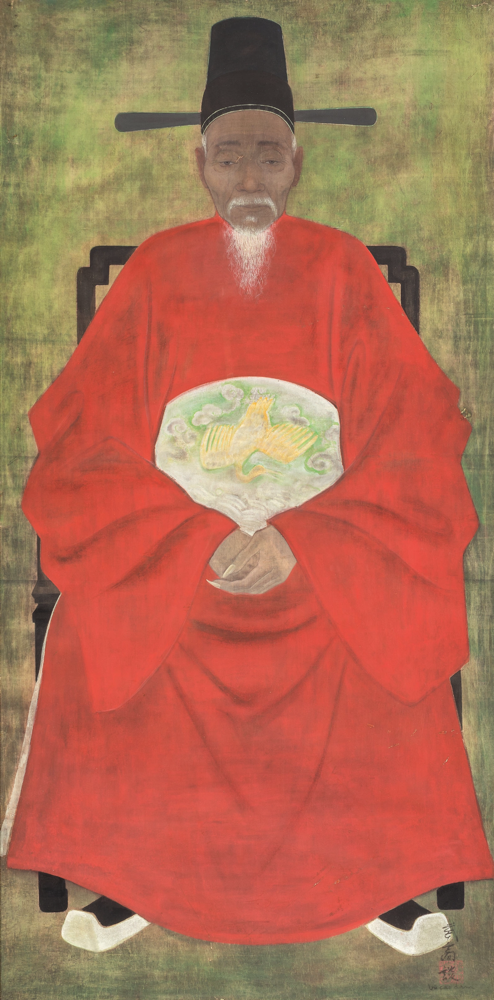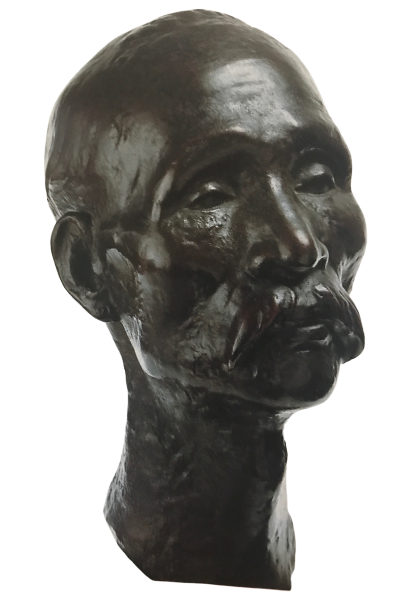Vu Cao Dam – The Mandarin

Upon seeing The Mandarin, Mrs Yannick Vu-Jakober, daughter of the artist Vu Cao Dam, wrote in a letter addressed to me in 2004:
This portrait of a mandarin was painted circa 1945-46. It does not necessarily depict [Vu Cao Dam’s] father, but as with all the paintings he did, he was surely inspired by memories. My mother is happy you sourced this marvellous portrait.
In another letter she addressed to me in 2018, she suggested a different date for the execution of this portrait: 1942. This anecdote demonstrates the continuous quest for knowledge required in Vietnamese art – as well as art in general – and its actualisation.
It is not insignificant that during the occupation of France (1940-45) where the artist had already migrated there 11 years ago, that he created a large portrait of this dignified civil mandarin – from the highest rank, as indicated by the crane set on his garment – and that it is the largest silk listed in Vu Cao Dam’s entire oeuvre of works.
The artist illustrates this mandarin with some austerity, and in a very Chinese style. In these times of difficultly, Vu Cao Dam seems to ‘reactivate’ the Chinese influence and questions his real identity. In all beings, the quest for immortality can be accompanied by very base anxieties.
Vu Cao Dam was the son of the scholar Vu Dinh Thi, founder of the Hanoi School of Interpreters. The face of the man in the portrait resembles that of a bronze work that was cast by the artist circa 1927, entitled Buste de mon père (‘Bust of My Father’), which was exhibited at La fleur du pêcher et l’oiseau d’azur.

Jean-François Hubert